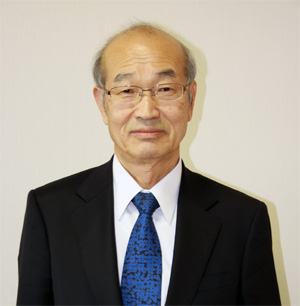The Chinese economy maintained high growth at roughly 10% per year until 2010. Since the growth rate in 2011 was 9.3%, it can be said that high growth continued until 2011. However, it dropped to 7.7% in 2012, and slowed to 7.4% last year. In light of this change in trend, the Chinese government has set a growth rate target of 7% for this year. As for how things have progressed since then, growth remained at 7% compared to the same period last year in both the first and second quarters of this year, but in the third quarter it fell below 7%, to 6.9%. Many people may have noticed this as it was widely reported with headlines such as "China's economy slowing down."
Import figures, which are released monthly, are thought to strongly reflect domestic demand trends, but since the latter half of last year they have been falling below the same period of the previous year, and in September, the most recent figure, a significant drop of 20.4% compared to the same period of the previous year, was recorded. It is fair to say that domestic demand is cooling down quite rapidly. China is the world's second largest economy, accounting for more than twice Japan's GDP (gross domestic product) and 13% of the world's (2014, IMF statistics), so there is no doubt that the economic slowdown in this country will have a major impact on the world economy. International organizations such as the IMF consider the slowdown in the Chinese economy to be a major risk factor for the world economy from this year to next year.
The prevailing view is that this slowdown in the Chinese economy is not temporary or cyclical, but represents a transition from high growth to moderate or stable growth, in other words, a structural change.
It is generally believed that Japan's high economic growth, which continued at an annual real growth rate of around 10%, ended around 1970. The biggest factor was a significant decline in the influx of population from rural areas to large urban areas such as the Tokyo metropolitan area. The oil shock that occurred in the fall of 1973 added to the slowdown in growth.
Japan's high economic growth was due to the movement of population from rural areas to large cities, symbolized by the terms "employment train" and "mass employment" → increase in households in large cities → increased demand for home appliances and other products → increased supply capacity in the home appliance industry and other sectors (increased capital investment) → "economies of scale" through mass production → improved corporate profitability → lower bookbinding prices and increased wages for workers → increased demand for home appliances and other products → increased capital investment to strengthen supply.
This virtuous cycle of increased demand → increased supply → increased demand continued for 15 years, resulting in unprecedented high growth, a period that was called the "miracle of the world." However, as the 1970s began, the growth rate was repeatedly halved, and after recording growth of around 5% per year for five years during the bubble era in the late 1980s, growth fell to zero when the bubble burst, and Japan experienced a period of deflation that has been referred to as the "lost two decades" until recently.
In China as well, the view that the recent slowdown is a sign that the labor migration from rural areas has decreased and that structural labor shortages have begun to restrict potential growth is gaining ground among experts. In my next article, I would like to consider this point in comparison with the experience of Japan.
(Diary entry dated December 7, 2015)

[Profile of Shigeo Uchida]
Born in 1941. Graduated from the Faculty of Economics at Keio University in 1965 and joined the Nihon Keizai Shimbun. After working in the Securities Department of the Editorial Department, the Japan Center for Economic Research, head of the Securities Department at the Tokyo Head Office and as an editorial writer, he is currently Managing Director the Chiba Gakuen School Corporation and Professor Emeritus Chiba University of Commerce.
<Major publications>
"Seminar: Introduction to the Japanese Economy" (co-author, Nihon Keizai Shimbun)
"Showa Economic History (Part 2)" (co-author, Nihon Keizai Shimbun)
"The New Japanese Economy" (co-author, Nihon Keizai Shimbun)
"History of Japanese Securities 3" and "Now You Can Understand! How the Japanese Economy Works" (sole author, Nihon Keizai Shimbun, Inc.)
"New Introduction to the Japanese Economy" (co-author, Nikkei Publishing Inc.) and others